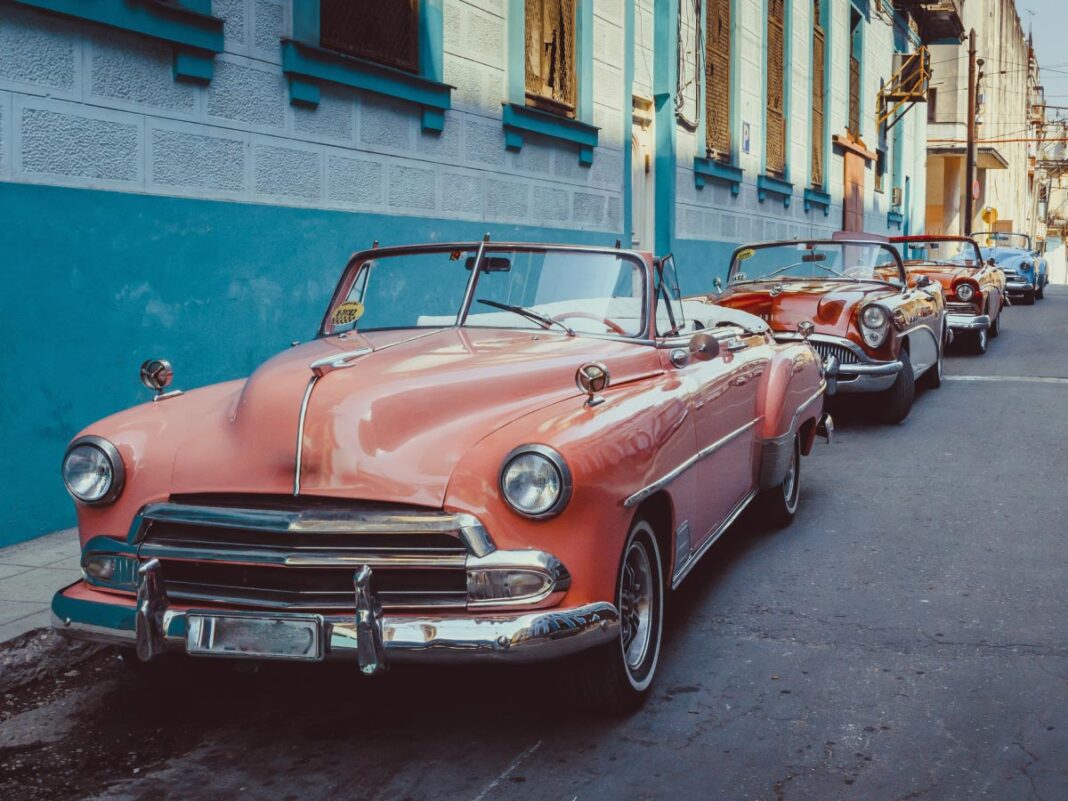In an era dominated by cutting-edge electric vehicles and autonomous driving technology, a surprising trend is capturing the hearts of car enthusiasts worldwide: restomodding classic cars. This movement blends the timeless beauty of vintage automobiles with modern technology, breathing new life into old classics and redefining the automotive scene.
What is Restomodding?
Restomodding is the art of restoring a classic car while modifying it with modern components and technology. Unlike traditional restoration, which aims to return a vehicle to its original condition using authentic parts, restomodding enhances functionality, safety, and comfort without compromising the car’s aesthetic appeal.
Why is Restomodding Gaining Popularity?
A Fusion of Nostalgia and Modernity
The allure of restomods lies in their unique combination of classic design and contemporary performance. Enthusiasts are drawn to the idea of owning a vehicle that not only looks iconic but also offers the reliability and convenience of today’s cars. For instance, many restomods feature modern engines, power steering, advanced suspension systems, and state-of-the-art entertainment systems.
Environmental Consciousness
As environmental concerns grow, so does the interest in sustainable driving options. A significant trend within restomodding is the conversion of classic cars into electric vehicles. Companies like Everrati and Lunaz are leading the charge by electrifying iconic models, offering zero emissions and enhanced performance without sacrificing the vehicles’ historical essence.
Accessibility and Community
The rise of restomodding is also fueled by the sense of community it fosters. Car shows, online forums, and social media platforms have become hubs for enthusiasts to share their passion for vintage vehicles, exchange tips, and showcase their unique builds. This camaraderie attracts a younger generation eager to participate in preserving automotive history with a modern twist.
The Debate Among Enthusiasts
While restomodding has many advocates, it also faces criticism from purists who believe that classic cars should remain untouched. Critics argue that removing original engines diminishes a car’s historical appeal. However, supporters see restomodding as a way to preserve and enjoy classic cars in a contemporary context, ensuring they remain relevant and drivable in today’s world.
Notable Restomod Projects
- Project Midnight: A custom Defender 90 built by ECD Automotive Design, featuring an electric drivetrain with an 84 kWh battery pack, offering up to 200 miles of range. It combines timeless design with cutting-edge EV technology.
- Porsche 911K by Tuthill Porsche: Showcased at Monterey Car Week, this restomod attracted significant attention for blending classic aesthetics with modern performance.
Challenges in Restomodding
Cost Considerations
Restomodding can be an expensive endeavor. High-quality builds often require substantial investment, with some projects starting at $310,000 and reaching over $1 million. Potential unexpected costs during the build process can also add up, making budgeting a critical aspect of any restomod project.
Legal and Ethical Implications
Modifying classic cars may involve navigating legal considerations, especially when it comes to emissions regulations and safety standards. Additionally, potential copyright issues with manufacturers can arise if the car is intended for resale, requiring careful attention to legal compliance.
The Future of Restomodding
Restomod culture is going mainstream, with increasing numbers of enthusiasts embracing the movement. The integration of electric powertrains into classic cars represents a significant advancement, aligning with global shifts towards sustainability. As technology continues to evolve, restomodding offers a promising avenue for preserving automotive heritage while meeting contemporary demands.
Market Demand and Investment
The growing popularity of restomods is reflected in the market, with build slots for innovative models having waiting times of up to two years. Investors and celebrities are also taking interest, recognizing restomods’ potential as both luxury items and sustainable transportation alternatives.
Embracing the Retro Revolution
Restomodding is more than just a trend; it’s a revolution that combines the best of the past and present. Whether it’s the raw appeal of a muscle car with a modern engine or a vintage SUV converted into an electric vehicle, restomods offer a personalized driving experience that resonates with a wide array of enthusiasts.
Getting Started with Restomodding
For those interested in embarking on a restomod project, consider the following steps:
- Choose the Right Vehicle: Select a classic car that resonates with you and that has available parts and community support.
- Set a Realistic Budget: Account for the purchase of the car, parts, labor, and unexpected expenses.
- Decide on DIY vs. Professional Build: Evaluate your skills and determine whether to undertake the project yourself or hire experienced professionals.
Where to Find Restomod Services and Parts
- ECD Automotive Design: Specializes in building custom restored vintage vehicles with modern enhancements. Offers services for Land Rover Defenders, Range Rover Classics, and Jaguar E-Types.
- Online Marketplaces: Platforms like AutoTrader Classics can help you source vintage cars and parts.
- Specialty Shops: Companies like Everrati and Lunaz focus on electrifying classic vehicles, offering bespoke services for discerning clients.
Conclusion
The restomod movement is redefining what it means to own and enjoy a classic car. By melding the nostalgia of vintage automobiles with the conveniences of modern technology, restomods represent the next big thing in the automotive world. Whether driven by a desire for unique personalization, environmental consciousness, or simply the joy of driving, restomodding is a revolution that invites everyone to participate in preserving and enhancing automotive history.


